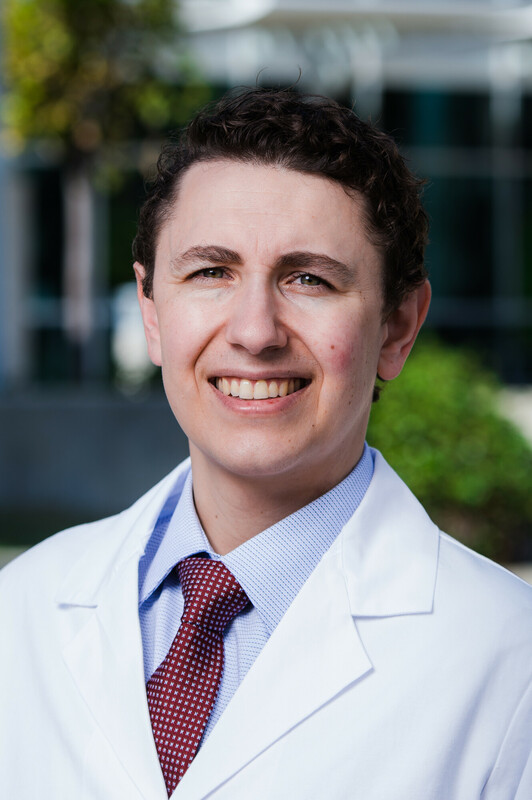Media contact: Adam Pope
 Daniel Killeen, M.D.
Daniel Killeen, M.D.
Photography: Lexi CoonEndoscopic ear surgery is emerging as an exciting, rapidly developing field of otologic surgery. This innovative procedure provides qualifying otology patients with a less invasive treatment option than traditional ear surgery. Daniel Killeen, M.D., an assistant professor of otolaryngology specializing in otology and neurotology at the University of Alabama at Birmingham Marnix E. Heersink School of Medicine, is the first surgeon to perform endoscopic ear surgery at UAB.
Endoscopes were first utilized in ear surgery primarily for inspection, typically after removal of a cholesteatoma; but its use has evolved to allow for complete surgical procedures through the ear canal. Primarily, this technique is beneficial for removal of cholesteatoma and repair of tympanic membrane perforations but may also be used to remove benign tumors of the middle ear.
Benefits for patients
The endoscope allows for superior visualization of the areas that can be difficult to see with traditional binocular microscopy through the ear canal, such as the anterior tympanic membrane and the posterior epitympanum. Previously, surgeries to repair large or difficult to reach perforations of the tympanic membrane or for removal of cholesteatoma required an incision behind the ear and possibly removal of the mastoid bone behind the ear. With this endoscopic technique, patients may avoid an incision behind the ear or removal of the mastoid bone — and may also avoid the time associated with healing from it.
Training with pioneers in the field
Killeen’s experience with this approach began during his residency at University of Texas Southwestern, and continued into his fellowship, also at UT Southwestern. There he trained under mentor Brandon Isaacson, M.D., who adopted endoscopic ear surgery in 2014 and pioneered the field. Killeen observed his mentors applying endoscopic surgery to all manner of ear surgery, including medial graft tympanoplasty, lateral graft tympanoplasty, cholesteatoma resection, tympanic paraganglioma resection, petrous apex cholesterol granuloma marsupialization and stapedectomy.
The timing meant that Killeen was in an advantageous position to learn this relatively new endoscopic ear surgical technique, alongside traditional microsurgical ear techniques, from physicians who were instrumental in establishing the field throughout his training.
“We are very fortunate that Dr. Killeen has brought his practice and expertise to UAB, and now rounds out a very strong Division of Otology/Neurotology with division director Dr. Erika Walsh,” said Brad Woodworth, M.D., interim chair of the Department of Otolaryngology and James J. Hicks Endowed Professor. “They are an absolutely fantastic team.”
Promising outcomes
While there may be a hearing benefit to some endoscopic procedures, in general, excellent outcomes for most middle ear surgeries can still be obtained with either the endoscope or the microscope. However, avoiding a postauricular incision intuitively should lead to less pain for the patient, and studies are ongoing to further investigate the impact of endoscopic surgery on patient pain.
This cutting-edge technology complements the outstanding advanced tertiary clinical care and research progress provided within the Division of Otology/Neurotology at UAB.